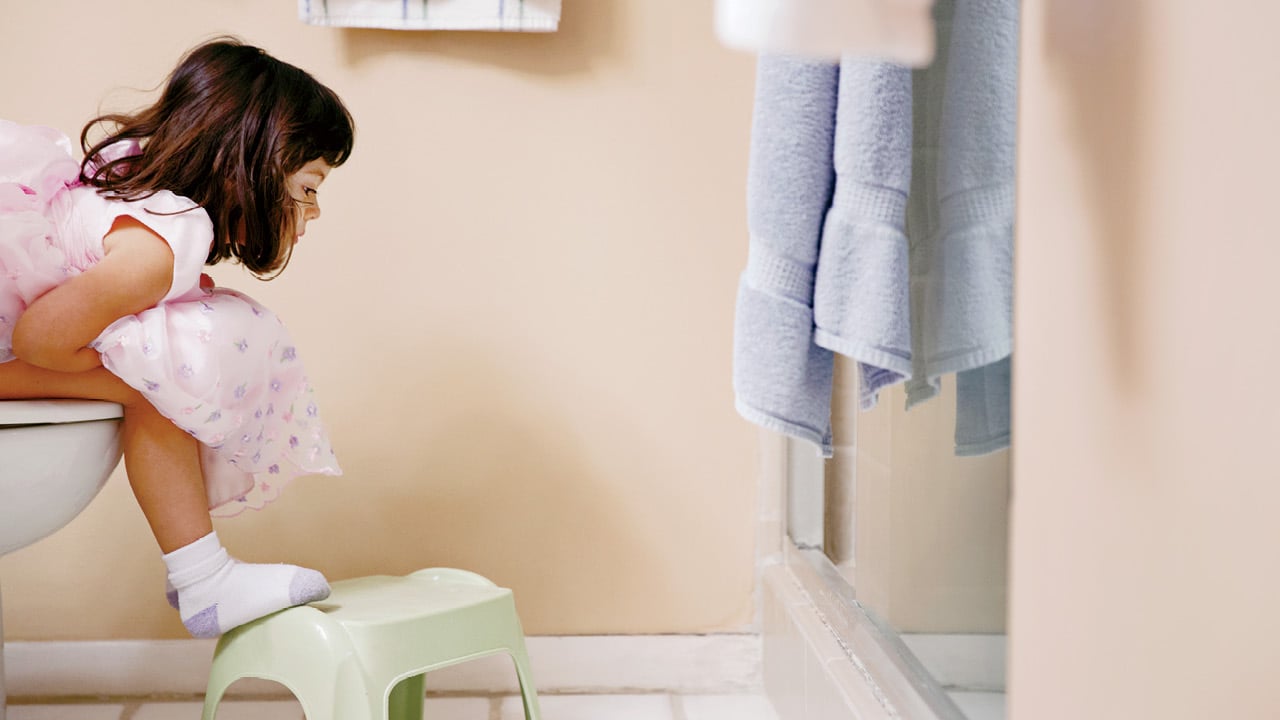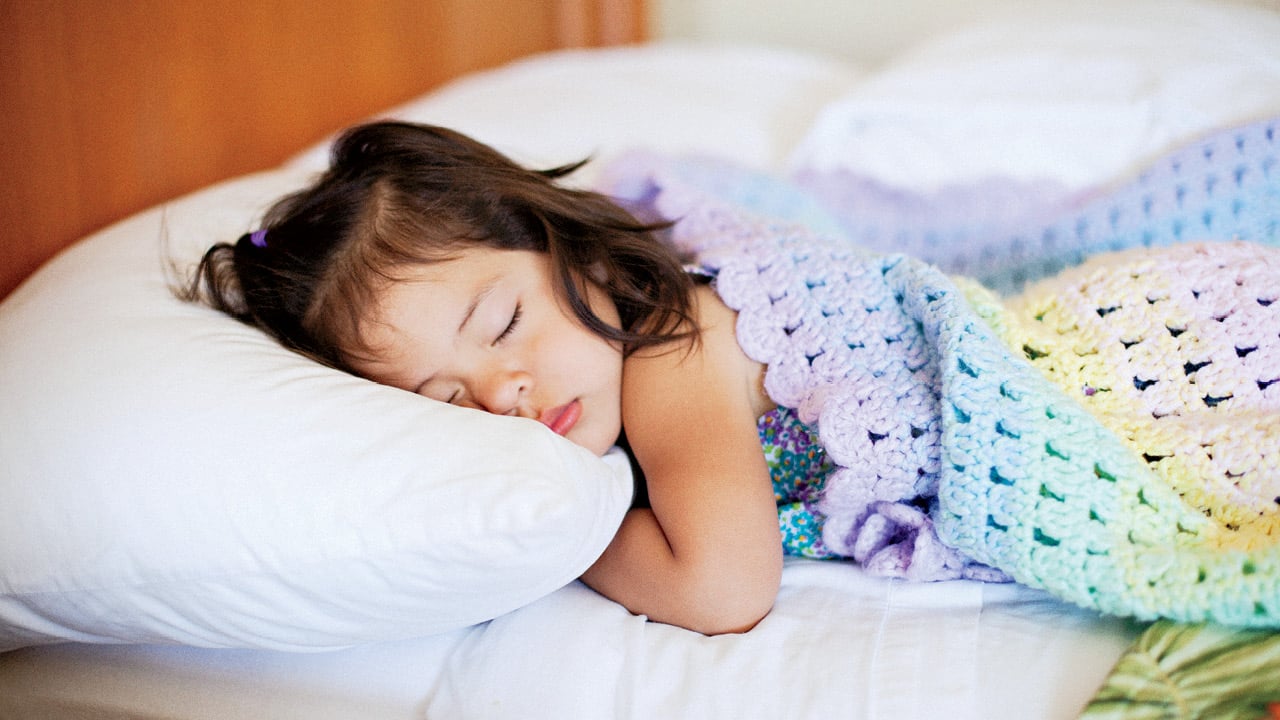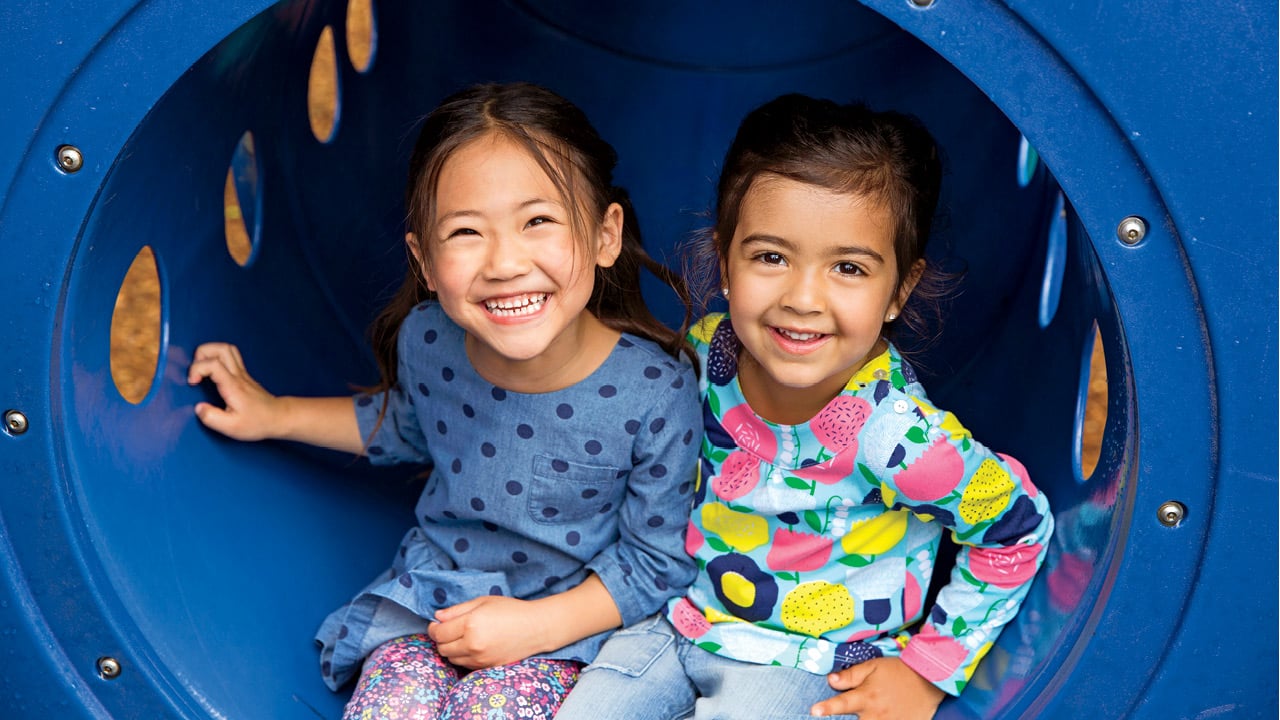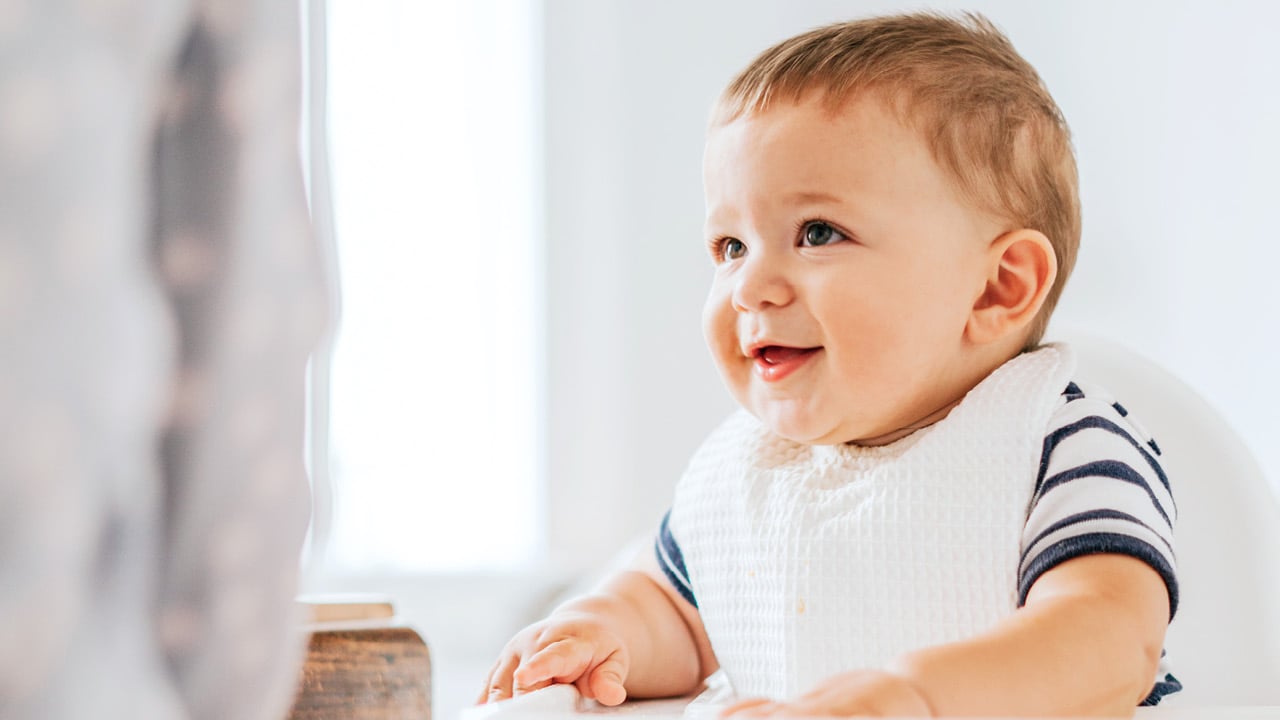Products You May Like
Toilet training is my favourite game-changer milestone. I still get a thrill when I think about The Day the Diaper Genie Left the Building. This stage was one of the tougher (wetter and smellier) ones to get through, taking about six months longer than the three-day weekend I envisioned. But the end result was well worth it: no more diapers.
Milestones are goalposts that mark your child’s increasing independence, says Sharon Smile, a developmental paediatrician at Holland Bloorview Kids Rehabilitation Hospital in Toronto. Those benchmarks never stop coming. “You pass one goalpost and there’s another and another,” says Smile.
It’s common to expect your kid to meet those goals when the parenting books tell you they should, and it’s exciting, too, but don’t get too caught up on timelines. “Kids are always in a state of development,” says Kathryn Keely, division chief of community paediatrics at The Children’s Hospital of Eastern Ontario in Ottawa.
Resist the urge to push your kid to meet milestones on a pre-set schedule. “A child feels the pressure and will balk at that activity,” says Keely. Instead, Keely tells parents to look for indications that a child is moving toward the next developmental stage rather than determine it’s time they do it.
Here are five milestones and the signs that suggest your little one may be ready to start tackling them.
Photo: Getty Images
1. Starting solids
Typical timeline: Six months old
Both the American Academy of Pediatrics and the Canadian Paediatric Society recommend introducing solids to infants at around six months old, says Julia Celestini, a paediatric dietitian in Burlington, Ont. “It’s then that infants tend to be physiologically and developmentally ready for new foods, textures and methods of feeding.”
Giving baby a first taste of food can be an exciting and anxious moment—and it’s normal to want the experience to go perfectly as planned. But before you start, look for a handful of developmental signs that they’re truly ready. For example, babies need to have the neck strength to hold their heads up and move them from side to side, and to open their mouths when food is offered. They should also be able to sit up on their own with limited support (as they will have to in a high chair) and be able to lean forward.
Look for manual dexterity, too. If they can pick up their soother and put it into their mouth (or try to), for example, they’re probably going to be able to deal with small pieces of cereal or a spoon. And if they’re watching you eat with interest and excitement—and even reaching for your plate—then food is on their radar.
Not every infant who shows interest in eating solids is physiologically ready, though. For example, infants are born with a tongue-thrust reflex that helps them nurse and prevents them from choking. That reflex lessens over time but may still be a factor to consider when introducing solids. One way to see where your child is at with this reflex is to thin out a bit of baby cereal (use formula or breastmilk) and use a spoon to put a dab in your infant’s mouth. If your baby’s tongue pushes the food back out, they’re still working on it, says Celestini. “If the reflex is present even after a few attempts, it might be best to wait a week or two before trying again,” she says.

Photo: Getty Images
2. Potty training
Typical timeline: 18 months to four years old
I started potty training my son when he was around two and a half, mostly because I thought he was at the age when I ought to do it—which, in retrospect, may not have been the best approach, according to the experts.
Most kids become ready to start potty training anywhere between the ages of 18 months and four years of age, says Smile. The majority of kids are ready when they are two or three, but it’s not unusual to need to wait until age four. “There is a lot of cultural variability in the timing of potty training,” says Smile.
The most important thing to remember is that you really shouldn’t start the transition out of diapers at a predetermined age that you have decided is appropriate. The impetus for training shouldn’t be what you think your kid should be doing, or what their peers are doing; rather, it should be based on their developmental readiness.
Some indicators your kid is on the potty-training track: They can keep their diaper dry for at least two hours and are able to tell you that they have to go (or are going) to the bathroom. If they complain when their diaper is wet—or pull it off because they don’t like the way it feels—that’s a solid sign they’ve developed good awareness of wet versus dry. If they can pull their pants up and down and sit unsupported on the potty, they’ve got the necessary training prerequisites, too.
Don’t get hooked on one form of training if it’s not working for your child, says Keely: “If there was only one that worked, there would only be one program.” And don’t be alarmed if it takes longer to master going Number Two. That’s pretty typical. If your kid’s poop tends to be on the hard side, consider a diet adjustment as you embark on toilet training. “It’s helpful if the stools are soft so that bowel movements are not painful, because kids may be reluctant to go to the toilet and sit if they think it might hurt more,” says Keely.

Photo: Getty Images
3. Dropping the nap
Typical timeline: Two to four years old
When my son was around three years old, he decided he was done with his afternoon nap. My attempts to tire him only tired me out, so I gave up putting him down after lunch.
Sleep is one of those tricky issues because there’s so much variance over a child’s life (and from kid to kid), says Smile. But generally speaking, kids stop napping before school starts, between three and five years old.
Exactly how a kid loses the nap is variable. My son just stopped falling asleep and audibly protested napping. Some parents may phase the nap out as part of prep for kindergarten, subbing in quiet time or restful periods instead.
Regardless of how it goes down—on their own steam or as part of a plan for school—if your toddler is alert and active without the extra Zs, that’s a good indication that they’re fine without the rest. If they’re irritable or seem tired, they may not be getting enough sleep over the course of a day, says Smile. In those cases, consider how much sleep they are getting at night. When my son stopped napping during the day, I dialled back his bedtime because he seemed tired earlier. This is a common story among parents (and it can be pretty exciting to get your evenings back!).

Photo: Getty Images
4. Moving to a toddler bed
Typical timeline: Three years old and up
Most kids will make the transition from a crib to a toddler bed around age three, says Lauren Heffernan, a paediatric sleep consultant based in Oakville, Ont. But there are exceptions.
Vanessa Li*, a mother of one who lives in Hamilton, Ont., had to convert her two-year-old’s crib into a bed when she started repeatedly crawling out at night. Li’s daughter was tall for her age, too—another factor that influenced the switch.
If your kid is climbing out of the crib or getting too large for it, it’s time to move. Heffernan often tells parents to put the mattress flat on the floor (or on the lowest setting) first.
When immediate safety isn’t a factor, you can gauge your child’s readiness by talking to them about it. Li got her daughter excited by letting her choose her own blankets and sheets.
And although you might be tempted to switch a kid out to make room for a new baby, that may not be the best idea, cautions Heffernan. “I really never recommend making big transitions like this around the arrival of a new sibling. It might result in less sleep for the parents (if the child was happy and comfortable in their crib), and then they will get even less sleep when baby comes.”
Heffernan tells parents to think of the transition from crib to bed as a process. It’s entirely normal for a kid to leave the bed repeatedly or call for you more often during this time. Parents can mitigate anxieties by encouraging kids to play in their new space. It doesn’t hurt to lie down with your child for a bit either.
Li and her husband dealt with the change by letting their daughter go back and forth between her bed and theirs until she stopped on her own. Now at age four and a half, she’s choosing to sleep independently. “Sometimes she’ll call for me,” says Li, “but I just do a check-in now.”

Photo: Getty Images
5. Attending a drop-off playdate
Typical timeline: Four to six years old
Sharon MacDonell*, a Toronto-based mother of twin boys, used kindergarten as the developmental measurement for when it would be fine to drop them off at a friend’s house for a playdate. “I felt like if they could be in school all day without me, they would be OK on a short playdate without me, too,” she says.
She remembers feeling a slight thrill as she dropped them off, because it meant she didn’t have to stick around and engage in small talk with parents she wasn’t close friends with. She didn’t leave the kids with strangers, though—these were parents of classmates whom she had met before.
While there’s no set age at which a drop-off playdate is ideal, there are some developmental skills to look for that suggest your kid is going to be fine with it. If your child is playing with another child interactively—rather than still choosing parallel play or simply observing other kids playing—that’s a clue they’ll be good on their own. You can also try to determine if your little one has the verbal skills to tell an adult that they’re upset or distressed; this suggests they’ve got the skills that make a drop-off playdate more success than disaster.
If they’re asking you to arrange a playdate for them at their friend’s house (rather than at yours), that’s an indication they’re game for a solo outing, too. Though in this case, Smile says it’s not just about how a kid feels. It’s important parents feel comfortable with the environment as well, she says.
Kids usually start to acquire these developmental skills between the ages of three and four. But that doesn’t mean all kids this age will be ready to go solo. Try never to force a child on a playdate, and understand that even kids who are content to go to their grandma’s house on their own may not be happy to be dropped off at a schoolmate’s house.
Regardless, it’s important to prepare them for the experience. “It’s natural for a kid to become upset if they’re being left in a strange environment by a parent, the person they feel most comfortable around.” In these cases, Smile advocates some advance planning. “Do a drive-by of the place; tell a story about what they’ll do. We have to prepare our kids to be ready for things that are new.”
Milestones are the highlight reel of parenting. But they don’t happen on a set schedule. Best not to rush the end of diapers or apply rigid ideas about when and how development happens. Instead, look for the smaller but no less significant signs that your child is growing and changing right in front of you. In their own small way, they’re can’t-miss occasions, too.
